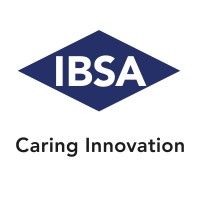
Chengdu Tongde Pharmaceutical Co. Ltd.
概览
标签
| 排名前五的药物类型 | 数量 |
|---|---|
| 小分子化药 | 6 |
| 酶 | 1 |
| 排名前五的靶点 | 数量 |
|---|---|
| RNAP(细菌DNA指导的RNA聚合酶复合体) | 1 |
| ACHE(乙酰胆碱酯酶) | 1 |
| Collagen x ELA2 | 1 |
关联
靶点 |
作用机制 AChE抑制剂 [+1] |
在研适应症 |
非在研适应症- |
最高研发阶段批准上市 |
首次获批国家/地区 澳大利亚 |
首次获批日期2018-08-20 |
作用机制 胶原蛋白刺激剂 [+1] |
最高研发阶段批准上市 |
首次获批国家/地区 中国 |
首次获批日期1981-01-01 |
靶点- |
作用机制- |
在研机构 |
原研机构 |
非在研适应症- |
最高研发阶段批准上市 |
首次获批国家/地区 中国 |
首次获批日期1981-01-01 |
开始日期2024-07-26 |
申办/合作机构  成都市海通药业有限公司 成都市海通药业有限公司 [+1] |
开始日期2024-05-06 |
申办/合作机构 |
开始日期2023-07-17 |
申办/合作机构  成都市海通药业有限公司 成都市海通药业有限公司 [+1] |
This study employs network toxicology, molecular docking, and molecular dynamics simulations to assess the characteristics and potential molecular mechanisms of aspartame-induced hepatocellular carcinoma (HCC). Utilizing ChEMBL, STITCH, and SwissTargetPrediction databases, potential target proteins associated with aspartame are identified. HCC-related targets are determined through bioinformatics and weighted gene co-expression network analysis (WGCNA). Gene enrichment analysis explores the signaling pathways related to aspartame-induced HCC. Further refinement using the STRING database and Cytoscape software highlights 15 key targets. Molecular docking, conducted using Autodock Vina, assesses the relationships between aspartame and each key target. Molecular dynamics simulations evaluate the binding capabilities of aspartame with core targets obtained through molecular docking. The results indicate that aspartame may induce HCC by modulating apoptosis and proliferation of liver cancer cells, affecting inflammatory signaling pathways, and regulating estrogen metabolism, posing to the occurrence and development of liver toxicity and associated inflammation, thereby leading a risk of hepatocarcinogenesis. This study provides a theoretical foundation for understanding the molecular mechanisms underlying aspartame-induced HCC. Additionally, our network toxicology approach accelerates the elucidation of toxic pathways for uncharacterized food additives.
组织架构

管线布局
2025年12月17日管线快照
当前项目
| 药物(靶点) | 适应症 | 全球最高研发状态 |
|---|---|---|
三磷酸腺苷二钠水合物 | 心肌疾病 更多 | 批准上市 |
苯甲醇 | 疼痛 更多 | 批准上市 |
辅酶A(Chengdu Tongde Pharmaceutical) | 白细胞减少 更多 | 批准上市 |
硫酸软骨素 ( Collagen x ELA2 ) | 高脂血症 更多 | 批准上市 |
利福平 ( RNAP ) | 麻风 更多 | 批准上市 |
药物交易

转化医学

营收

科研基金(NIH)

投资

融资



